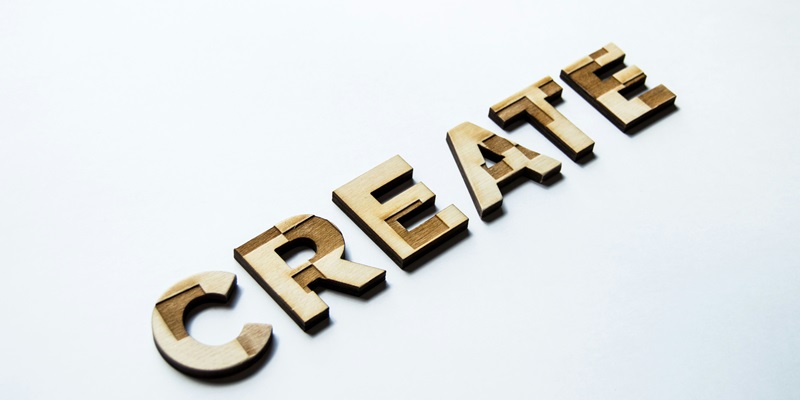Generative AI is transforming the landscape of creativity and content creation, propelling a significant shift in the way we conceive and produce creative works. This innovative technology is being seamlessly woven into the fabric of organizational processes, yielding notable rises in efficiency and productivity. As these AI-driven tools become more deeply integrated into creative professions, they facilitate unprecedented modes of collaboration and the exploration of novel ideas.
The ripple effect of this paradigm change is vast, impacting numerous industries by redefining traditional roles and enabling the emergence of fresh opportunities. Professionals and creators are now empowered to harness the capabilities of generative AI, breaking through previous limitations and pushing the boundaries of what can be imagined and executed. This fusion of human ingenuity with cutting-edge AI technology is setting the stage for a new era of content creation, where the complex interplay between man and machine is reshaping the foundations of creativity and innovation.
Enhancing Creative Workflows
Tackling Repetitive Tasks
Generative AI technology like GPT-3 and DALL-E is transforming the way social media managers and marketers work by automating routine creative tasks. Crafting numerous social media updates across different platforms can be draining, but AI assistance is changing the game by producing captivating content quickly. Consequently, professionals spend less time on content generation and more on complex, strategic tasks.
Marketers also reap the benefits as AI tools efficiently create engaging product descriptions, email campaigns, and advertising copy. This shift empowers them to invest their energy into more significant, higher-level thinking and planning. Generative AI is thus not just a time-saver, but a game-changing ally in the creative process, heralding a new era of productivity and allowing human creativity to focus on bigger picture strategies.
Spurring Ideation and Innovation
When creative blocks strike, generative AI comes to the rescue, acting as a source of inspiration with a plethora of suggestions and ideas. This AI-assisted creativity is especially beneficial during brainstorming, igniting new possibilities. Writers can leverage AI to generate unexpected plot developments or dialogue, enriching their stories. Artists, similarly, can use AI to explore new design routes, experimenting with various styles and color schemes outside their usual comfort zones. Platforms like DALL-E become collaborative partners for creatives, propelling them past creative limitations into a space where innovation flourishes. Through this synergy of human and artificial intelligence, the creative process is not only rejuvenated but also pushed in directions previously unimagined, leading to a more diverse and intriguing array of creative work.
Confronting Ethical Concerns
Preserving Originality and Ownership
The rise of generative AI in content creation has triggered a reassessment of concepts related to ownership and originality. This technology’s adeptness at replicating human-like creations prompts concerns about authenticity and increases the risks of plagiarism. Consequently, identifying AI-generated works is becoming increasingly vital. Implementing solutions, such as digital watermarks for visual content, is one way to preserve a creator’s rights and acknowledgment. In the unfolding narrative of AI’s role in creative domains, it’s essential to uphold ethical standards and honor the value of unique contributions. This commitment ensures the protection of creative integrity while recognizing the innovative potential of AI in various forms of artistic expression. Maintaining this balance demands conscientious effort in both the development and application of AI technologies, safeguarding the interests and recognition of human creators.
Ensuring Authenticity in AI Assistance
Generative AI, particularly in the form of programs like DALL-E that produce artwork, is sparking debate on the future of creativity. Critics worry that such technology may dilute genuine human artistic expression. In response, artistic circles and regulators are contemplating methods for incorporating AI tools without obscuring the human element in creation. This includes promoting transparency in how AI is utilized to support, rather than replace, the human creative process. The challenge lies in fostering an ongoing dialogue and formulating guidelines that clearly demarcate AI’s role as an enhancer of human ingenuity. Balancing this evolving relationship will hinge on a collective commitment to keeping the essence of artistry authentically human, all the while harnessing the benefits that AI tools provide.
Democratizing Creative Expression
Removing Barriers to Creation
Generative AI is revolutionizing the realm of creativity by leveling the playing field. Now, even those with no formal expertise can produce high-quality content, conveying their ideas with a newfound professional flair. This democratization is especially impactful in creative industries, where technical intricacies once barred many from participation. As AI tools advance, they offer unprecedented opportunities for a diverse array of individuals to showcase their creativity. Thus, generative AI not only simplifies content creation but also promises to weave a more vibrant and inclusive cultural tapestry by encouraging underrepresented voices to share their unique perspectives and contribute to the global conversation. This wave of innovation stands to infuse the artistic community with fresh insights and transformative potential, illustrated by the ever-growing reach of technology in shaping human expression.
Balancing Inclusivity with Quality
Detractors voice concerns that the rise of generative AI might lead to a deluge of subpar content, as barriers to entry lower. Proponents counter-argue, emphasizing the technology’s role in fostering inclusivity and ingenuity. As more people gain access to quality content creation tools, diversity in ideas and perspectives enriches the creative conversation. However, human vision and curation remain imperative to sift through the increased volume, ensuring that the democratization of creation does not compromise the excellence of the artistic canon.
In conclusion, the surge of generative AI in creative industries presents both challenges and opportunities. As the technology continues to mature, society must address the ethical nuances and establish norms that encourage both human-centric creation and innovation. With responsible stewardship, generative AI has the potential to not just bridge the gap between creative potential and realization but also to reimagine the very landscape of the creative world.

